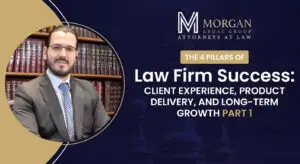Catering to an elderly loved one is not as easy as it seems. There are a lot of plans to be done, several paperwork to be filled all to ensure that the right provisions are made for any situation that may arise along the way.
As an senior or an individual related to a senior, it is important that you have a little insight into some of these plans as they would come in handy at one point in your life or the life of that elderly loved one.
One of the numerous plans designed for seniors is the Medicaid asset protection trust.
What is a Medicaid Asset Protection Trust?
A lot of individuals think they can escape any formal estate planning and still be approved for Medicaid. The biggest error individuals make is transferring properties to children, typically, the family residence. A lot of issues are created:
- If the transfer is conducted three years prior to when you need the help of a nursing home, Medicaid will deny coverage in a five years look back.
- If an adult child resides with their parent for a minimum of two years prior to when the nursing home is needed, it may be possible to transfer home based on the Child Caregiver Exception
- The house is now in the child’s name. In the event of a divorce, the value of the property will be shared between the child and her ex. Or, if a financial problem should arise, the house is a good asset and creditors could swoop in on it using it to their advantage.
As the name implies, a Medicaid Asset Protection Trust is a trust made to safeguard assets from being counted for Medicaid eligibility. This unique type of trust allows an individual to be eligible for long term care benefits from Medicaid, while safeguarding assets from being used up if long-term care is required.
Qualifying for Medicaid
Qualifying for Medicaid is not a walk in the park. To qualify for this benefit, your household assets must be under a particular level. Rules about asset levels are quite stringent, and there is a fixed five year look back period to determine if a person is eligible.
Provided the trust is set up and assets in it are transferred five years before the donor applies for Medicaid long-term care benefits, Medicaid will not sanction the donor for transferring assets, and the presence of the trust will not affect the eligibility of the individual.
Assets present in a Medicaid Asset Protection Trust are not deemed countable for Medicaid. Once the trust owns assets, Medicaid cannot consider the asset and I cannot be taken to compensate long term costs.
How does Medicaid Asset Protection Trust Work?
To get a better understanding of Medicaid asset protection trust, it is best to understand the terminology linked with them. First off, there is the person who sets up the trust. This individual can be called a lot of names, including grantor, trustmaker, and settlor.
While neither trustmakers nor their spouse can be trustees, adult children including other relatives can be designated as trustees. These trustees must stick to the rules set out by the trust, which are very precise on how the money can be utilized. For example, there should be a stringent ban of using trust fund on the trustee.
There is also a beneficiary or beneficiaries, who often benefit from the trust after the death of the grantor. For the trust to be Medicaid exempt, the principal beneficiary mustn’t be the grantor (the owner of the trust). This is simply because if the grantor were also the beneficiary, he or she would have access to the assets, thus making the individual ineligible for Medicaid care benefits.
Besides, the trust must be an irrevocable trust- a trust where its terms cannot be altered- in order to be exempted from Medicaid’s asset limit. Once the assets are moved into the trust, they are no longer that of the grantor, neither can he or she reclaim ownership of the trust. If the assets are placed in a revocable trust-a trust where its terms can be altered or the trust itself terminated- the Medicaid applicant or the owner of the trust will be deemed ineligible for Medicaid care benefits. This is simply because the grantor still has control over the assets present in the trust.
Need a Medicaid Lawyer?
If you need a Medicaid lawyer, don’t hesitate to contact us. We boast of some of the best Medicaid lawyers and they are all capable setting up a Medicaid asset protection trust and handling issues related to Medicaid.









